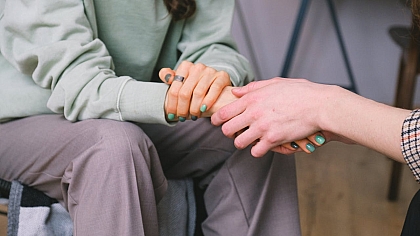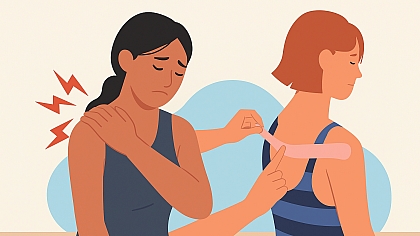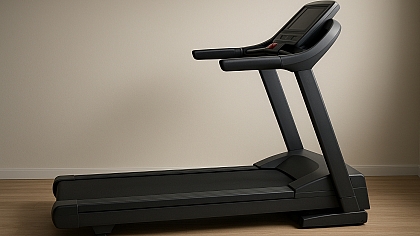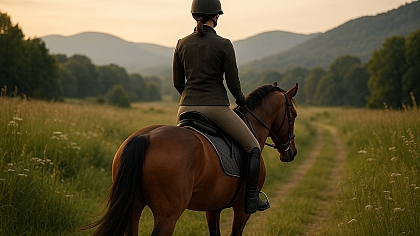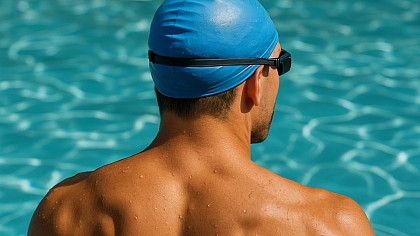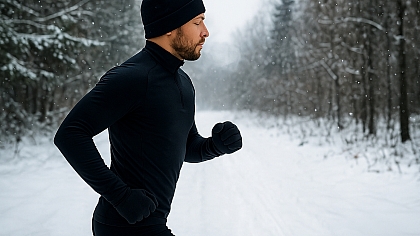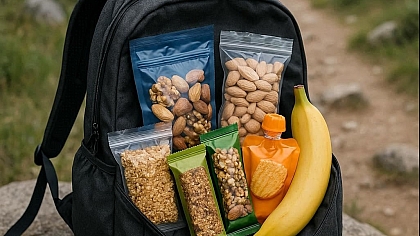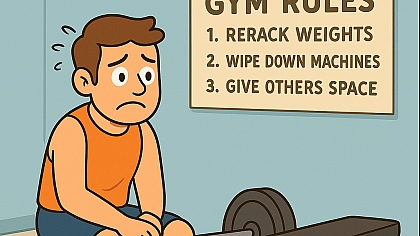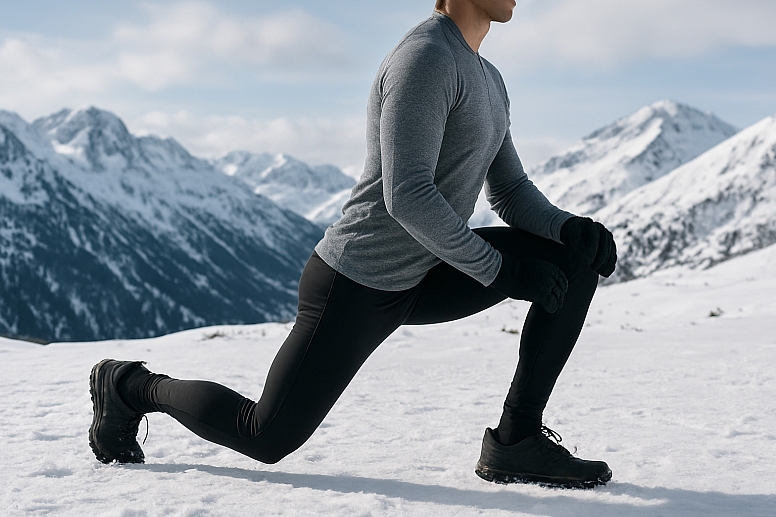
Snow Sports Fitness: How to Prep Your Body for Skiing/Snowboarding
Winter sports demand explosive power, endurance, and resilience against cold-weather fatigue. Whether you're hitting the slopes for the first time or preparing for backcountry adventures, proper off-season training prevents injuries and maximises performance.
Here’s your 8-week preseason plan to build ski/snowboard-specific strength, agility, and stamina.
Why Snow Sports Fitness is Different
Skiing and snowboarding require:
✔ Eccentric strength (controlled descents)
✔ Rotational power (carving turns)
✔ Reactive balance (terrain changes)
✔ Cold-weather endurance (high-altitude cardio)
Key difference from gym workouts: You need isometric endurance (holding positions) + quick recovery between runs.
The 8-Week Training Plan
Phase 1: Foundation (Weeks 1-3)
Focus: Build joint stability + aerobic base
| Workout | Details |
|---|---|
| 3x Weekly: Wall sits | 5x 45sec (simulate ski posture) |
| 2x Weekly: Lateral hops | 4x20 (side-to-side agility) |
| 1x Weekly: Hike with pack | 60min, 10-15lb (altitude prep) |
Pro Tip: Add cold exposure (ice baths or winter walks) to adapt to freezing temps.
Phase 2: Power & Plyometrics (Weeks 4-6)
Focus: Explosiveness for moguls/powder
| Workout | Details |
|---|---|
| Box jumps | 5x10 (focus on soft landings) |
| Skater lunges | 4x12/side (lateral power) |
| Bosu ball squats | 3x15 (uneven surface balance) |
Game Changer: Wear a weighted vest (10-20lb) for downhill simulations.
Phase 3: Sport-Specific Prep (Weeks 7-8)
Focus: Mimic slope demands
| Workout | Details |
|---|---|
| Plyo push-ups → burpees | 10 rounds (quick transitions) |
| Single-leg Romanian deadlifts | 4x10/side (prevent knee valgus) |
| Interval cycling | 30sec sprint/90sec rest (chairlift recovery) |
Critical: Test all gear (boots, goggles, layers) during workouts.
Key Exercises for Snow Sports
1. Skier’s Squat (Eccentric Focus)
- Why? Builds quad endurance for long descents
- How: 3x12, 3sec lowering phase
2. Russian Twists (Weighted)
- Why? Improves rotational control during carves
- How: 4x20 (10lb medicine ball)
3. Calf Raises on Edge
- Why? Strengthens ankles for edge control
- How: 5x15 on stair edge (toes hanging off)
4. Plank-to-Tuck Jumps
- Why? Trains' core-to-leg power transfer
- How: 5x8 (explode up from plank)
Altitude & Cold Adaptation
For High-Altitude Resorts (8,000+ ft):
- Pre-trip: Train with elevation mask (2x weekly)
- First 24hrs: Hydrate 2x normal + avoid alcohol
- Supplement: Rhodiola rosea (reduces altitude sickness)
For Sub-Zero Temps:
- Layer strategy: Merino wool base → synthetic mid → windproof shell
- Face protection: Balaclava + vaseline on exposed skin
Injury Prevention Checklist
✅ Knees: Banded lateral walks (3x20 steps)
✅ Hips: 90/90 stretches (daily)
✅ Shoulders: Turkish get-ups (3x5/side)
✅ Feet: Towel scrunches (build arch strength)
Red Flag: Persistent knee pain = check boot alignment.
FAQs
Q: How heavy should my training pack be?
A: Match your resort gear (typically 10-20lb for water/snacks/layers).
Q: Can I train without snow access?
A: Yes—use slide boards, rollerblades, or dunes for similar muscle use.
Q: How do I prevent cold-induced asthma?
A: Wear a neck gaiter over your mouth; pre-treat with prescribed inhaler.
Q: Should I carb-load before ski days?
A: Yes—60g carbs/hour (gels, bananas) for >4hr sessions.
Train Like You Ride
Your last 2-3 workouts should include:
- Morning: Dynamic warm-up (leg swings, hip openers)
- Afternoon: 3- 4 min intense intervals (simulate runs)
- Evening: Mobility work (foam roll quads/IT bands)
The Physics of Slope Performance: How Body Positioning Affects Fatigue
Advanced biomechanics research reveals optimal stances for efficiency:
- Skiing: 35° forward lean reduces quad burn by 22% (Journal of Sports Sciences)
- Snowboarding: Bent knees + centred hips prevent edge-catching falls
- Moguls: Absorbing bumps with ankle flexion (not knees) saves 30% energy
Drill: Practice "phantom chair" sits against a wall—knees at 110°, hips back, chest up—to engrain proper posture.
Altitude Nutrition: Carb Timing for Thin-Air Performance
New studies show carb metabolism changes above 8,000ft:
- Pre-session: Fast-acting carbs (dates, gels) 30 minutes before first run
- Mid-mountain: 1:1 glucose-fructose mix (40g/hr) for oxygen efficiency
- Apres-ski: Protein + tart cherry juice accelerates high-altitude recovery
Pro Tip: Carry maple syrup packets—they don’t freeze and provide instant energy.
The Vestibular Training Advantage
Slope vertigo affects 1 in 3 riders. Combat it with:
- Gaze stabilisation drills: Focus on a fixed point while head-turning
- Somatosensory challenges: Single-leg stands on foam pads
- Spin training: 5 controlled rotations → immediate balance test
Proven Results: 6 weeks of vestibular work improves mogul performance by 18% (Swiss Ski Federation data).
Cold-Adaptive Breathing Techniques
Subzero air triggers bronchospasms in 60% of athletes. Train your lungs:
- Nasal breathing only below 20°F (-7°C)
- Exhale fully to prevent moisture buildup in masks
- Pursed-lip breathing downhill to regulate CO2
Emergency Fix: Carry a HeatEx mask liner for -30°F (-34°C) wind chills.
Equipment-Specific Strength Drills
Match training to your gear profile:
- Stiff boots (freeride): Calf raises with 3-sec holds
- Twin-tip skis (park): Box jumps with 180° spins
- Powder board: Sandbag carries on unstable surfaces
Boot Fit Test: Should allow 1) toe wiggle room, 2) zero heel lift, 3) even buckle pressure.
The Recovery Paradox: Why More Intense Days Need Active Rest
Resort data shows ideal work: rest ratios:
- Beginners: 1:3 (10min run → 30min lodge break)
- Advanced: 1:1 (20min backcountry → 20min skinning)
- Pro: 3:1 (45min gates → 15min recovery)
Hydration Hack: Add 1/4 tsp salt + 1 tbsp honey to hot tea for on-mountain electrolyte replenishment.
Psychological Prep for Variable Conditions
Combat "survival skiing" mentality with:
- Visualisation: Imagine perfect turns in crud/ice
- Terrain reading: Identify fall lines during lift rides
- Pressure drills: Time yourself on easy blues to simulate race nerves
Proven: Skiers who mentally rehearse recover 50% faster from spills.
Final Challenge:
This week, add 3 sport-specific elements to your workouts:
- Downhill eyes (always looking 3 turns ahead)
- Pole planting rhythm (even in strength exercises)
- Recovery breathing (4sec inhale, 6sec exhale between sets)
Next Steps: Bookmark this plan—start 8 weeks before your first trip!
How to Get Fit for Skiing & Snowboarding | Snow Sports Prep
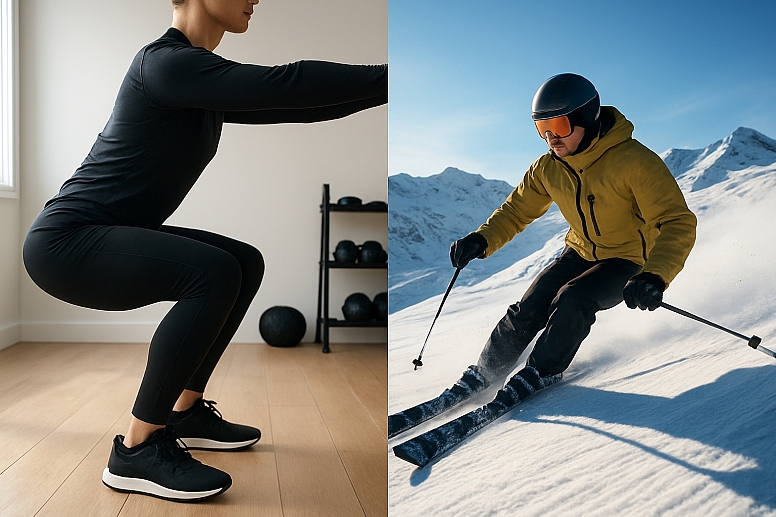
Get your body ready for the slopes! Learn simple exercises for skiing and snowboarding fitness to prevent injuries and have more fun.
What You Need to Know First
Getting your body ready for skiing or snowboarding makes your time on the mountain safer and much more fun. You will have more energy and feel less sore. The best exercises build strong legs, a strong core, and good balance. You should start training many weeks before your winter trip.
Why Your Body Needs to Get Ready
Skiing and snowboarding use your muscles in special ways. They are not like running or walking. Your legs must stay bent for a long time. You must balance on a slippery surface. Your body must turn and move quickly.
If your muscles are not ready, you can get tired very fast. When you are tired, you have a higher chance of falling and getting hurt. Getting fit for snow sports helps you:
- Avoid injuries like sprains or knee problems.
- Have more energy to ski or snowboard all day.
- Feel more confident on your skis or board.
You do not need to be a super athlete. You just need to prepare your body for the work it will do.
The Best Exercises for Snow Sports
Think about three main areas: legs for power, core for control, and balance for stability.
Building Strong Mountain Legs
Your legs are your engine on the slopes. They hold you up and help you turn.
-
Bodyweight Squats: This is the most important exercise. It teaches your legs to hold a bent position, just like your skiing stance.
- How to do it: Stand with your feet shoulder-width apart. Slowly bend your knees and lower your body like you are sitting in a chair. Keep your chest up. Go down until your thighs are parallel to the floor, then push back up. Try to do 15 repetitions.
-
Lunges: Lunges build strength in each leg individually. This is important because you often push with one leg at a time.
- How to do it: Stand tall. Take a big step forward with one foot. Lower your body until your front knee is bent at a 90-degree angle. Your back knee should almost touch the floor. Push off with your front foot to return to the start. Do 10 repetitions on each leg.
-
Wall Sits: This exercise makes your leg muscles burn, exactly like they do when you are skiing down a long run.
- How to do it: Lean your back against a wall. Walk your feet out and slide your back down the wall until your knees are bent at a 90-degree angle, like you are sitting in an invisible chair. Hold this position for as long as you can. Try to hold for 30 seconds to start, and then build up to a minute or more.
Creating a Solid Core
Your core muscles are your body’s powerhouse. A strong core connects your leg movements to your upper body. This helps you steer your skis or snowboard.
-
Planks: Planks build incredible strength in your entire core, back, and shoulders.
-
Bridges: This exercise strengthens your glutes and lower back, which are crucial for maintaining a good, powerful stance.
- How to do it: Lie on your back with your knees bent and feet flat on the floor. Push through your heels to lift your hips off the floor until your body forms a straight line from your shoulders to your knees. Squeeze your glutes at the top. Slowly lower back down. Do 15 repetitions.
Improving Your Balance
Great balance helps you stay on your feet and react to bumps or changes in the snow.
-
Single-Leg Stands: This is as simple as it gets, but it is very effective.
- How to do it: Stand on one foot. Try to hold it for 30 seconds without holding onto anything. Switch legs. To make it harder, try doing it with your eyes closed.
-
Heel-to-Toe Walk: This exercise improves your balance for walking in ski boots and for staying steady on your board.
- How to do it: Walk in a straight line, placing the heel of one foot directly in front of the toes of your other foot, as if you are on a tightrope. Take 15-20 steps.
Putting It All Together: A Sample Week
You do not need to spend hours every day. Consistency is more important than long workouts.
| Day | Activity | What to Do |
|---|---|---|
| Monday | Strength & Balance | Squats, Lunges, Planks, Single-Leg Stands |
| Tuesday | Cardio | 20-30 minutes of brisk walking, cycling, or using a stair climber |
| Wednesday | Rest or Light Activity | Go for a gentle walk or stretch |
| Thursday | Strength & Balance | Wall Sits, Bridges, Lunges, Heel-to-Toe Walk |
| Friday | Cardio | 20-30 minutes of a different cardio activity (jumping jacks, swimming) |
| Saturday | Active Fun | Go for a hike, bike ride, or play a sport |
| Sunday | Rest |
Don't Forget to Warm Up and Cool Down
Always take 5 minutes to warm up your muscles before you exercise. Light jumping jacks or marching in place will get your blood flowing. After you finish, gently stretch your legs, arms, and back. Holding a stretch for 20 seconds helps your muscles recover.
Gear Up and Get Out There
Getting your body ready is the most important piece of gear you can own. It is more important than the newest skis or the best jacket. When your body is strong and balanced, you can focus on the fun parts: feeling the cold air, enjoying the mountain views, and making great memories.
Your mountain adventure awaits. Are you ready to train for it?
Frequently Asked Questions
How long before my trip should I start training? You should start your exercises at least 6 to 8 weeks before you plan to go skiing or snowboarding.
What is the best cardio for skiing? Activities that mimic the motion of skiing are best. This includes using a stair climber, cycling, and hiking up hills.
I'm a beginner. Do I still need to get fit? Yes! Beginners often fall more than experienced riders. Being fit helps you get back up more easily and prevents your legs from getting too tired.
What should I do if I get sore? It is normal for your muscles to feel sore after new exercises. Rest, stretch gently, and drink plenty of water. The soreness will go away in a day or two.
Can I just run to get in shape for skiing? Running is good for general fitness, but it does not build the same side-to-side stability and leg strength that specific skiing exercises do. It is better to combine running with squats and balance drills.
